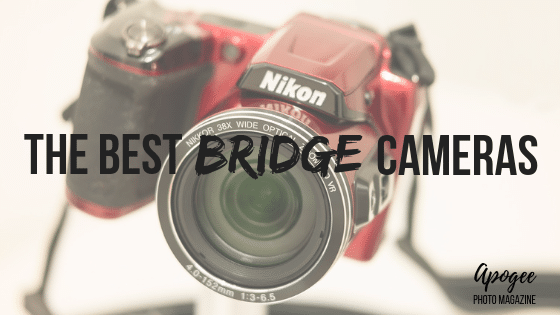
DSLR? Mirrorless? Compact? Ultra compact camera? Usually, when people do camera shopping, they focus their attention on these categories. While each one of these have undeniably great cameras to consider, one more category still exists and it is well worth your attention.
Bridge cameras are an increasingly popular group these days. As the name suggests, the style and features of these cameras act as a bridge between compact point and shoots and interchangeable lens cameras. Bridge cameras are relatively heavy compared to other compact cameras; many are as large as an entry level DSLR camera.
However, they retain the fixed, non-interchangeable lens design of a compact camera, as well as the smaller digital sensor. Depending on the style, they also include more advanced features such as manual control of the exposure triangle, image stabilization, and more.
Many bridge cameras today have a lens with very wide range of focal lengths, and these models are referred to as superzoom cameras. These superzoom cameras allow someone to shoot both wide-angle and telephoto images without swapping lenses. This unique ability makes these superzoom cameras great for travel as they can capture amazing landscape images as well as zoom in for a close up on a specific subject. However, a camera does not need to have a large focal length range to be considered a bridge camera.
If you’re looking for a camera that doesn’t fill up a bag with spare parts that will cost a fortune, like an interchangeable lens camera, then a bridge camera may be your best bet. So what sort of specifications should you be looking at while shopping?
What should I be looking for in a Bridge or Superzoom Camera?
Lens Optical Zoom
One of the best thing about bridge cameras is their extremely flexible, all-purpose lenses. Because of the fixed lens, camera manufacturers try to give consumers as much flexibility as possible. The newest bridge cameras often have extremely large focal ranges that are rarely duplicated in the interchangeable lens market.
Even more, they usually have impressively wide apertures, down to f/2.4 or so. The aperture or f/stop is a rating of how wide or narrow the hole that lets light strike the sensor becomes. The smaller the aperture number, the larger the hole, which means more light for better exposure (as well as a smaller depth of field or focus plane).
However, due to technical constraints as well as cost-saving measures, these lenses constrict as you reach the maximum zoom range of the camera. An f/2.4 lens at the widest setting will usually stop down to around f/4 or more at max zoom, which is 150% less light striking the sensor and reduced overall image exposure.
But as long as you’re not shooting in environments where the lighting is challenging, such as the interior of a dimly lit church or a forest at twilight, you’ll find the maximum aperture values and flexibility offered by these lenses worth the cost.
Sensor Size and Resolution
Despite the chunky size of these bodies, bridge cameras tend to have smaller sensors compared to the interchangeable lens cameras they mimic. Most bridge cameras pack a 1” sensor (sized 12.80 x 9.60mm) or smaller. Commonly used for professional work, a 1” sensor is generous for a bridge camera and sized just under that of a Micro 4/3rds camera (sized 17.3 x 13.00mm). Many photographers even use even smaller 2/3” and 1-2/3” sensors.
If low-light photography is important to you, then sensor size is as big a consideration as aperture. The larger the sensor, the larger the area you have for detecting light. Image noise is also better controlled, and you get noticeable improvements in depth of field if you have an open aperture setting.
Camera resolution is shown in megapixel (MP) counts. While it is helpful, it is not as big a consideration as manufacturers will lead you to believe. The vast majority of cameras on the market have far more resolution than most photographers need. 12 MP is plenty for web use with room for cropping and clean display at full size on most computers and smart device screens. You can print an 8 x 12 photo at 300 ppi, which is perfectly suitable for magazines and books.
Most digital cameras today offer between 16 to 24 MP. Megapixel counts shouldn’t be the primary concern when shopping for a bridge camera, unless you intend to create large prints, posters, wall art, or want room for aggressive cropping.
Video Quality
Do you do a lot of videography? If so, is Full HD (1920 x 2018p) high enough or will you need 4K resolution (3840 x 2160p) for maximum resolution work? While professional videographers are more likely to use an interchangeable lens camera for 4K work, a vlogger or aspiring videographer with a bridge camera may not want to stick to Full HD resolution.
Keep in mind that high-resolution screens are continually becoming more affordable as the years pass. Recording in 4K means that you’re able to “future-proof” your work, quality-wise, even if you don’t have a high-resolution display. The main downside is that video file sizes are massively bigger from Full HD to 4K, as are the processing times.
The Best Bridge & Superzoom Cameras
Sony Cybershot RX10 IV
Bridge cameras blurred the line between interchangeable lens cameras and point and shoots thanks to their DSLR styling and features. The Sony Cybershot RX10 IV goes a step further and offers image quality comparable to an intermediate level DSLR with its highly advanced lens design and focusing system. If you’re looking for the best image quality in a flexible, weatherized package, the RX10 IV is the best bridge camera out there!
Incredibly Flexible Lens
Considering the price is into DSLR and mirrorless territory, the Cybershot RX10 IV has to offer quite a bit to remain competitive. For starters, the lens provided by Sony is one of the best in the bridge camera world. F/2.4-4 is a fantastic range that is very unusual in a point and shoot world because it’s extremely wide open.
This combination will give great exposure and depth of field throughout the focal range. While f/4 is somewhat constricted, it’s not nearly as poor as f/5.6 and beyond that’s common to bridge cameras.
Combined with the 24-600mm effective focal range, you have a lens that can cover nearly any type of photography, from landscapes to portraits and wildlife photography while providing excellent exposure. It even has 1:2 magnification for macro photography lovers. While it’s not a true macro (1:1 magnification), the RX10 IV absolutely has the best lens out of the five cameras we talk about in this article.
Excellent Sensor & Autofocusing
Sony makes some of the speediest autofocus systems on the camera market, and the RX10 IV is no exception. 325 phase detection points help ensure the generously sized 1” sensor can track subjects across 65% of the frame. Using continuous drive gains you get up to 24 frames per second burst photography, thanks to Sony’s famously fast BIONZ engine processing. The buffer holds up to 249 images, giving you around 10 seconds of continuous burst photography before needing to clear and save the results to a memory card.
The wide open aperture of the lens sometimes means that you may have too much light to work with during the brightest days. If you still want a shallow depth of field without overexposing your image, the RX10 IV’s advanced sensor offers a couple of good solutions.
One is to pull the ISO down to 64, reducing the light sensitivity of the sensor. The other is increasing the shutter speed up to 1/32000th of a second using the electronic shutter. Essentially the sensor turns itself on and off incredibly quickly to fire four times faster than the mechanical shutter. The electronic shutter is also silent and is perfect for discrete photography in event settings.
Image Stabilization & Videography Features
The Cybershot RX10 IV offers an incredible suite of features, far too many to recount every single one here. One big one includes Optical Steady Shot (OSS) built into the camera-lens system. This ensure handheld images remain sharp even when zoomed out to 600mm.
Videographers will also love the Sony RX10 IV. It offers 4K video resolution at 24 and 30 fps as well as Full HD resolution 40x slow motion video capture (960 fps) even at maximum zoom range. S-log recording also allows you to better edit the color profile, shadows, and highlights of your video footage because a greater amount of dynamic range is captured (though the files are larger as a result).
Combined with the microphone, headphone, and HDMI ports, the RX10 IV is quite capable as a video camera as well. Only the LUMIX FZ2500 can compete in terms of video features.
Panasonic LUMIX DMC-FZ2500
If you create both photography and videography, or even just dabble in one but specialize in the other, a hybrid camera might be your best bet. Hybrids offer features from both styles and significantly expand your creative possibilities. The Panasonic LUMIX DMC-FZ2500 is not only one of the best bridge cameras for photography, but is also an excellent video camera as well.
Built-In Neutral Density Filters
In today’s competitive camera market, it’s hard to find features that aren’t being offered by other manufacturers. But the LUMIX FZ2500 really delivers something deceptively special with its built-in neutral density filters. Users can control these filters via a switch on the lens barrel, with settings of 1/4, 1/16, and 1/64, which corresponds to 2, 4, and 6 stops of light reduction.
As photographers, we typically want as much light as possible to work with. But neutral density filters offer creative possibilities of their own. One of the best known is allowing photographers to shoot as much slower shutter speeds without overexposing the final photograph. Photographs that show silky smooth running water or waterfalls use ND filters to reduce incoming light while using shutter speeds around 2-5 seconds or more.
Another use for this feature is keeping the aperture wide open in bright lighting. Normally you’d want to stop it down, but that comes at the cost of depth of field. Adjusting shutter speed might freeze the action – but what if you’re trying to capture motion blur at a wide aperture? If ISO adjustment isn’t an option, then the built-in ND filters will come in handy here as well.
4K Photo & Videography Features
Panasonic is well known for blending photography and videography. One of the most fascinating results of this is the 4K Photo Mode of the LUMIX FZ2500. 4K Photo Mode takes a short 4K video recording that allows you to extract still images from the file. It’s basically 30 fps burst rate photography.
Another excellent feature that is sometimes in high-end cameras is internal focus stacking. With focus stacking, you select focus points in a still scene. The camera will then take a series of images using those focus points and then blend the photos into a final image with precisely the depth of field you want.
The Panasonic LUMIX DMC-FZ2500 is also the only other camera here to offer log video recording. While both the FZ2500 and Sony RX10 IV offer log video recording, the Panasonic model only offers it as a $99 upgrade while the Sony offers it natively. But given that the FZ2500 is significantly cheaper than the Sony model, it may not matter quite so much to pay for the upgrade.
While the LUMIX model does offer slow-motion capture at 120 fps, it’s not quite as impressive as the 960 fps offered by Sony. But even the Sony doesn’t offer DCI 4K (4096 x 2160 at 24 fps). If you need cinematic 4K resolution, then the FZ2500 is the clear winner as a hybrid photo/video camera.
Additional Features
Dolly Zoom is another feature rarely seen in bridge cameras. The effect creates the illusion of the background shrinking away or zooming in while the subject remains relatively stationary. It adds a sense of emotional impact, whether it be confusion, shock, or surprise.
Like the Sony model, the Panasonic also offers a full complement of ports, featuring micro-HDMI, headphone, microphone, and remote control ports. While it does miss out on a few of the best features of the Sony model, like weather sealing, the LUMIX FZ2500 is a fine balance between affordability and capability.
Nikon P1000
Nikon’s COOLPIX line consists of affordable bridge cameras that specialize in extremely long focal lengths. The P1000 offers the most zoom out of the entire series while still being budget-friendly. While overly large and lacking other unique features, it’s still a standout bridge camera.
Most Affordable Super Zoom Lens
Reach, reach, and more reach. If you want photographs of distant subjects, the Nikon P1000 simply can’t be beaten. The 24-3000 focal range converts to an incredible 125x optical zoom. Anything you can see can be put into sharp focus. The maximum aperture at 24mm is an excellent f/2.8, but as expected it does stop down as it zooms outwards.
Note that while the P1000 does have Dual Detect Optical Image Stabilization at this focal length, shooting handheld is still going to create significant camera shake. It’s much better to shoot with a tripod using the P1000. The maximum f/8 aperture at 3000mm is quite narrow and means you’ll struggle to get good exposure in low light, especially since you’ll want a fast shutter speed if you aren’t using a tripod. The autofocus capacity of the camera will also suffer as the light levels drop.
Great Features
The P1000 doesn’t stand out much, except for the incredible zoom, but it’s no slouch, either. The video resolution maxes out at 4K up to 30 frames per second. Sensor resolution sits at an excellent 16 megapixels. Given the small 1-2/3” sensor, the lower resolution means noise is better controlled compared to a higher resolution sensor.
Bird photography is one of the best uses of the reach the P1000 provides. Thankfully, Nikon cameras included a Bird Mode that optimizes shutter speed and focusing for quick captures. The lens is also close-focusing capable at up to 1 foot away; not as impressive as the 1 cm focusing of the LUMIX FZ300, but good for a super-zoom.
Other Considerations
While the Nikon P1000 is the undisputed master of zoom, it does have some downsides worth noting. The battery life is quite low for a bridge camera; at 250 shots per charge, it lags behind the other cameras listed here. The Sony leads the pack at 400 shots per charge, while each of the other models can last between 320 and 380 shots per charge (CIPA rating).
The huge lens also makes it quite chunky, even compared to other bridge cameras. At 1415 g (3.12 lbs), it’s significantly heavier than every other model here, and over twice as heavy as the lightest camera, the Canon SX70 HS (608 g or 1.43 lbs).
If you plan on shooting with a tripod regularly or absolutely must have the 125x optical zoom, the P1000 won’t disappoint. But it’s not the sort of camera you take out for a few quick shots and then tuck away discreetly.
Panasonic LUMIX FZ300
While the DMC-FZ2500 is a supremely capable bridge camera, Panasonic also has a budget option: the Panasonic LUMIX FZ300. Offering a constant open aperture, a decent focal range, touchscreen controls, and a medium-resolution sensor for below $500, the FZ300 is a very competitive choice. It even offers superior close-range photography capability with a minimum focusing distance of 1 cm over the 3cm of the FZ2500.
Constant Open Aperture
Most of the time, the lens on a bridge camera stops down the more you increase the focal length. F/2.4 or f/3.5 eventually becomes f/4 or even f/6 by the time you’ve reached maximum zoom. This means less light is entering the system and will affect the exposure of the final photograph. But the fixed lens of the LUMIX FZ300 has a constant f/2.8 aperture.
F/2.8 is a fairly wide open aperture that’s great for portraits and close-up photography. It also allows for a noticeably shallower depth of field than the f/3.5 or higher apertures most entry-level bridge cameras offer. While the 600mm max zoom range isn’t nearly as impressive as the 2000mm offered by the Nikon P1000, the constant fast aperture is a good trade.
Low-Light Performance
This particular bridge camera has something to offer that you may miss if you rely solely on the numbers off of the box: low light capability. With its medium resolution 12.1 MP sensor, each individual pixel is larger than those of a higher resolution camera with the same sensor size (1-2/3” sized 6.17 x 455mm). Remember that 12 megapixels is more enough for 95% of the photographers out there – don’t get sucked into megapixel wars.
While it will be hard-pressed to compete with the likes of a Sony A7S or other large sensor digital cameras, the LUMIX FZ300 is a great choice for natural light photographers looking for the bridge camera advantages. The constant f/2.8 aperture, even at maximum zoom, also helps its performance as a natural light camera.
Image Stabilization in a Weatherized Body
Digital cameras are usually the first item to be packed away when the weather turns foul. But the Panasonic LUMIX FZ300 is built using a rugged, splash and dust-proof design that incorporates rubber seals throughout the body. These seals prevent loose material from entering and ruining the camera or lens. While weatherization is common in interchangeable lens cameras, it’s a rare bridge camera that offers it, especially at so affordable a price.
While the LUMIX SZ300 doesn’t offer the incredible sensor stabilization elements of Panasonic’s Micro 4/3rds line, it does use a hybrid lens and digital-based image stabilization system. This Hybrid IS offers up to 5 stops of stabilization.
To better understand this, let’s say you’re shooting a scene where you need a shutter speed of 1/2000th of a second to avoid motion blur due to the movement of the vehicle you’re traveling in. With the Hybrid IS system of the SZ300, you could reduce your shutter speed to 1/60th of a second and have the same chance of motion blur affecting the final image.
Canon SX70 HS
Canon cameras are some of the most popular in the world for a good reason. With their intuitive menu designs, solid craftsmanship, and great color reproduction and image quality, it’s no secret that most photographers have shot with a Canon on at least one occasion. Canon equals quality, and the SX70 HS is no exception.
Well Balanced in Features
The Sony RX10 IV and Panasonic FZ2500 are the premium end models specializing in hybrid photography and intermediate to professional video work. The LUMIX FZ300 offers affordable hybrid photo/videography and specialized neutral density filters. The Nikon P1000 revolves around its super zoom capability. But the Canon SX70 HS takes a little bit from each of these cameras and puts it all into one.
The 65x optical zoom is a solid second place in terms of zoom reach; the Sony and Panasonic models don’t go beyond 25x optical zoom. That’s equivalent to a 21-1365mm lens on a 35mm camera. The maximum aperture is a somewhat constricted f/3.4 at 21mm, stopping down to f/6.5 at maximum zoom.
The Intelligent Image Stabilization (IS) system of the SX70 is also very impressive, offering around five stops of stabilization to help with not only shooting at longer focal lengths, but preventing blur while panning, shooting up close, and while using slower shutter speeds in low light conditions. The IS unit operates in tandem with a gyroscope to correct for unwanted movement.
Good Video Options
While it’s not up to the standards of Sony and Panasonic the Canon SX70 does provide some decent videography tricks. Like the other bridge cameras mentioned, it records 4K video but can also shoot 120 fps slow motion full HD video. And like the Panasonic LUMIX line, it uses 4K Frame Cropping (see 4K Photo Mode) to extract still images from 4K video files.
Fairly Compact Bridge Camera
While not tiny, the SX70 is the smallest bridge camera listed here. At 127 x 91 x 117 mm (5 x 3.58 x 4.61 in), it’s slightly smaller than the LUMIX FZ300 and significantly smaller than the others, especially the chunky Nikon P1000. And at 608 g (1.34 lb), it’s quite a bit lighter than all of the other bridge cameras.
If you want great zoom and bridge camera features without feeling quite so weighed down, the Canon SX70 HS is the best camera to carry around your neck. Smaller bodies usually mean smaller batteries and reduced shooting time, but the CIPA rating is a respectable 325 shots per charge.
Conclusion
Bridge cameras are providing more features with each passing year. While the cameras here all differ in terms of price and features, like optical zoom, video frame rates, and image resolution, every single one of these has something to offer for your type of photography or videography.
If you’re a hybrid shooter and want the best lens, 4K video, and photography features, then either the Sony Cybershot RX10 IV or Panasonic LUMIX DMC-FZ2500 are your best options. In terms of features and image quality, they really do stretch the boundary between bridge cameras and interchangeable lens cameras. And if you want most of what the LUMIX FZ2500 has to offer in a budget package, the Panasonic LUMIX FZ300 is also worth looking at. It also has unique features, including weatherization for all-elements photography.
While every bridge camera here has a very flexible zoom range, the Nikon P1000 is the undisputed king of super zoom. The Canon SX70 HS sits in second place in terms of zoom reach, and is overall very well balanced as far as its features and price are concerned. That being said, any one of these cameras will create stellar images for you when put to work!



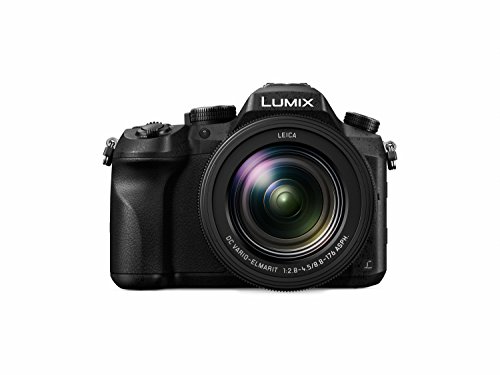


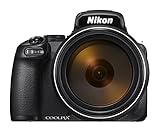

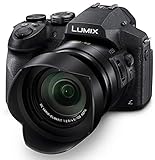


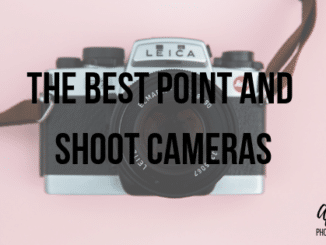
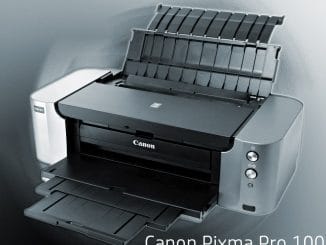
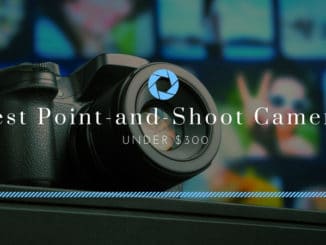
I like what you said about finding a camera with maximum aperture values in environments with less challenging lighting. I imagine that using a bridge camera can be a really useful sensing and surveillance tool for cities or entities that maintain the bridge. Finding a good bridge sensor is also probably important for issues like how natural problems like earthquakes and flooding can affect the integrity of the bridge.